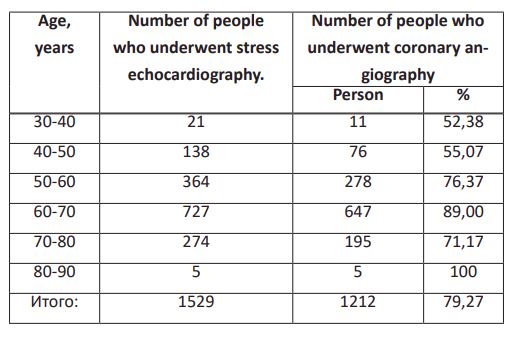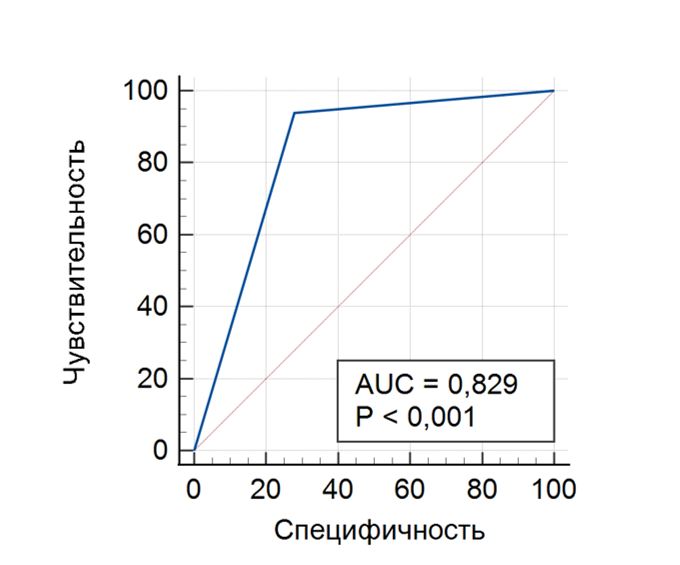Stress echocardiography in the assessment of coronary artery stenosis in patients with stable coronary heart disease
Surnina OV1,2*,Ponomareva IA1,Zaitsev DS1,Smetanin MYu1,Sosnovskikh MS1,Lamonova IE1,Sedelnikov AM1,Efremova Yu D2* and Osipov DR2
1The Republican Clinical Diagnostic Center of the Ministry of Health of the Udmurt Republic, Izhevsk
2 Izhevsk State Medical Academy, Izhevsk
*Corresponding author
*Efremova Yu D, Izhevsk State Medical Academy, Izhevsk, Russia
Table 1: Age of patients who underwent stress echocardiography and coronary angiography.
Table 2: Number of patients with arterial hypertension according to classification of arterial pressure levels.
Table 3: Presence of coronary artery stenosis in patients with a positive stress echocardiography test.
Table 4: Assessment of diastolic function of the left ventricle during stress echocardiography.
Figure 1: ROC analysis curve for assessing the sensitivity and specificity of stress echocardiography..
- Kalandarov DM (2021) Modern possibilities of stress echocardiography in examination of patients with ischemic heart disease. Economy and society. 6: 78–96.
- Donal E, Panis V, Kosmala W (2021) Exercise stress echocardiography: a great tool that can be adapted to the clinical question? Open Heart. 8 (1): 1–2.
- Ivanov SI, Alekhin MN (2023) Practical application of non-invasive left ventricular functional parameters in diagnosis of stable coronary artery disease. Russian Journal of Cardiology and Cardiovascular Surgery 16 (1): 12–16.
- Cotrim CA, Café H, João I, Cotrim N, Guardado J, et al. (2022) Exercise stress echocardiography: Where are we now? World J Cardiol 14(2): 64–82.
- Elkanova MM, Shitov VN, Botvina UV, Lopukhova VV, Saidova MA, et al. (2017) Stress Echocardiography in the Assessment of Long-Term Outcomes After Percutaneous Coronary Intervention in Patients with Stable Coronary Heart Disease. Kardiologia 57(7): 13–19.
- Hirasawa K, Izumo M, Akashi YJ (2023) Stress echocardiography in valvular heart disease. Front Cardiovasc Med 10:
- Clinical practice guidelines (2024) «Stable coronary artery disease».
- Dong L, Liu J, Qin Y, Yang WJ, Nie L, et al. (2023) Relationship between ambulatory arterial stiffness index and the severity of angiographic atherosclerosis in patients with H-type hypertension and coronary artery disease. Clin Exp Hypertens 45(1): 2228517.
- Clinical practice guidelines "Stress echocardiography: the agreed opinion of the EEA experts".
- Galderisi M (2005) Diastolic dysfunction and diastolic heart failure: diagnostic, prognostic and therapeutic aspects. Cardiovasc Ultrasound 3: 9.





